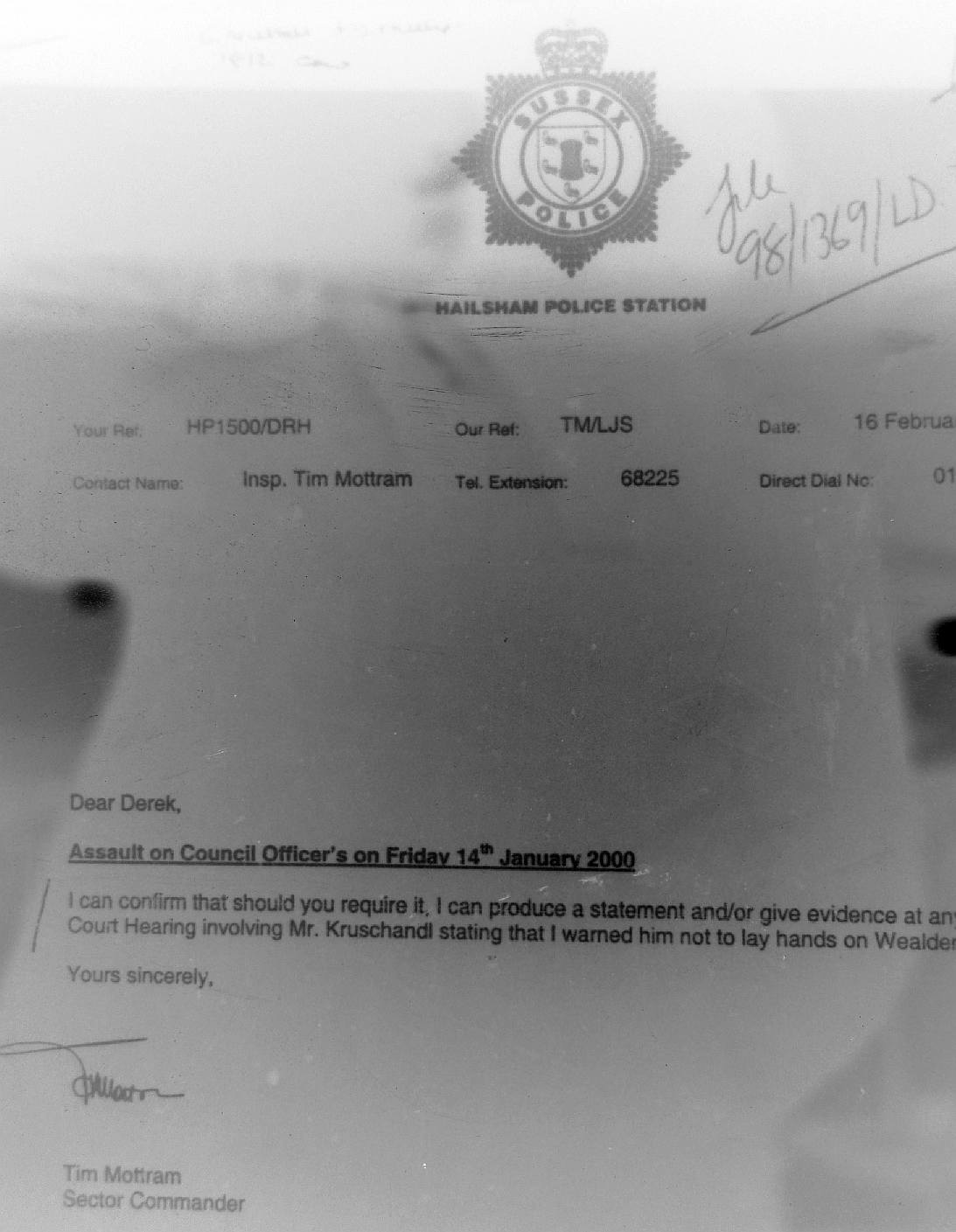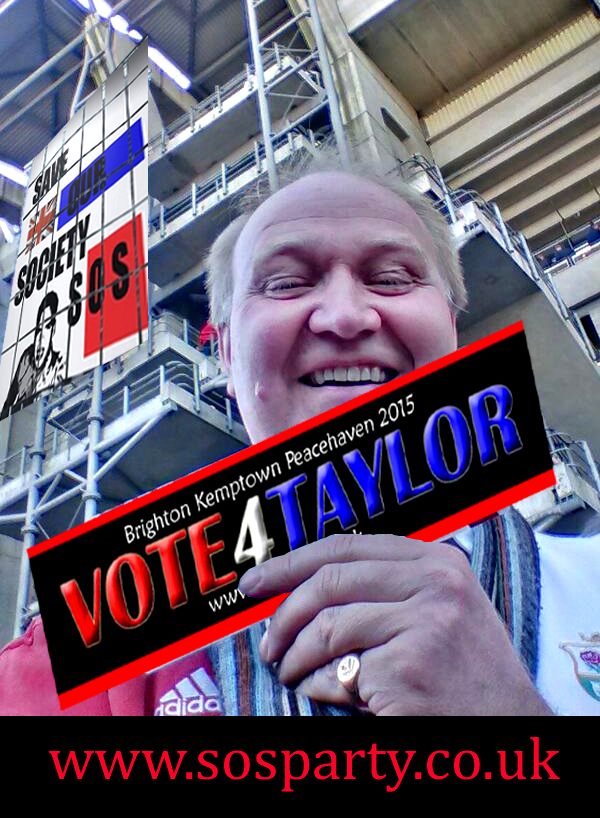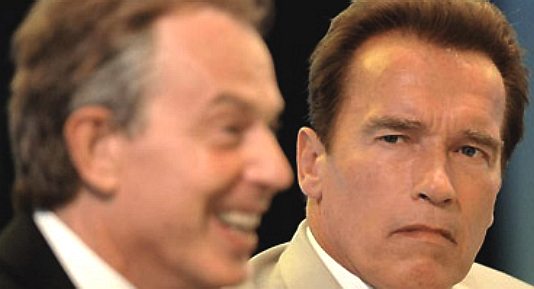|
TIM MOTTRAM
HOME | CASE STUDIES | HISTORY | LAW | POLITICS | RIGHTS | SITE INDEX
|
|
|
Inspector Tim Mottram operated from Deer Paddock in Hailsham during a period of High Court litigation where Wealden council officers were desperately seeking to use their authority to repair a defective Enforcement Notice from 1986 after it had been tested in the Crown Court in Lewes and found to be wanting.
Christine Nuttall was brought into the frame as a solicitor who, it appears from the evidence, was prepared to bend the rules as much as David Phillips and perhaps should not have been allowed to practice law, let alone handle cases where she was in a position of trust, where her deviousness routinely strayed into malfeasance territory, in that she also knew that an Enforcement Notice her council had been obtained by officers (George White and Thomas Hoy) lying to Inspector Raymond Dannreuther between 1986-1987 was a fraudulent instrument.
Council officers had been harassing Nelson Kruschandl since 1982 seeking to devalue the generating buildings in Lime Park to the benefit of influential neighbours, where Mr Kruschandl was seen to be the weaker subject and of no consequence in terms of transparency or accountability. In other words Wealden's officers thought they could eliminate him fairly quickly and move on to other pastures scott-free.
On several occasions David Phillips had tried to force his way into the generating buildings unlawfully using the fraudulent instrument as a legal battering ram. On one of these 186 recorded site visits he tried to push past Nelson Kruschandl, in the process assaulting his person. The objective was to prevent their target from closing the door to a workshop from where these civil servants were barred from entry. All Mr Kruschandl had to do was stand firm, which he did. It was Mr Phillips who needed to push Mr Kruschandl to effect entry - and that is a common assault and Mr Kruschandl knew that, and the fact he knew his rights enraged these council operatives who'd been in their jobs far longer than they should have been and had developed what is commonly known as a God complex and many civil servants in positions of authority tend to do.
The council's version of events is at odds with what actually happened, with Phillips and Nuttall saying that Kruschandl made the first move and assaulted Phillips. David Phillips is a proven liar. Twice he used photographs and gave them a different date attribute to try and obtain court decisions to show his employers what a clever fellow he was. But this ploy backfired in the case of David Charnley and Nelson Kruschandl, where the negatives and a letter from J Douglas Moss, proved Phillips to be a liar. Why then was Phillips employed by this council and how was it that he retired on an enhanced pension at the tax payers expense?
The fact is that Sussex Police had been working with Wealden to thwart 12 individual criminal complaints against this council's officers, by way of a Petition presented in 1997. Sussex police provided Derek Holness and his team with blank police paper on which the Council wrote what they wanted their members to hear. Not a single officer of the council was interviewed by Sussex police. Not a single informant was interviewed by Sussex police. Clearly, there was no investigation of the 12 allegations, but the public were led to believe that there had been. This is exactly what happened in the case of the James Ashley shooting: a cover up.
One has only to look at what was said about Sussex police in the House of Commons in 2002 to realise how corrupt the present system is, where both the police and councils are unaccountable for their actions.
HANSARD
HOUSE OF COMMONS, MONDAY 11th FEBRUARY 2002
The letters between Derek Holness and Tim Mottram reproduced below tend to show how supportive this police force would be in any attempt to gain an injunction or criminal conviction, where it was David Phillips who assaulted Nelson Kruschandl and Derek Holness was clearly eliciting the assistance of Sussex police in gaining a potential criminal charge, possibly also involving an armed raid, presumably hoping that the police might accidentally shoot their long term adversary and cure all their problems with one bullet, as Chris Sherwood did for them concerning Jimmy Ashley.
MORE MALFEASANCE IN SUSSEX
The well known dissident, Nelson Kruschandl is just one of a number of local Sussex residents who are victims of Wealden's various vendettas that amount to institutionalised discrimination.
The frequency of the events alleged is suggestive of an ingrained agenda that operates to keep planning consents out of the reach of certain residents, to the benefit of other better connected concerns. The chief executive of this council, Charles Lant is believed to be implicated by virtue of not acting to prevent crime in his council. The leader of the council, Bob Standley is alleged to have been put on notice as the some of these matters, but is seems is also sitting on his hands. The operations of this council are alleged to amount to a course of malicious conduct or even fraud, as defined by the Fraud Act 2006.
Even more worrying is whether or not the Sussex Police is party to these allegations of serious crimes and what part their Chief Constable, Giles York plays in all of this. It would be a feather in any police officer's career if he or she uncovered corrupt practices at a higher level and was brave enough to expose those cover-ups. It is a criminal offence to know of a crime and not report or investigate it.
It is alleged that Sussex police are complicit in the agenda of Wealden District Council to rubbish their dirtiest darkest secret by framing the occupier of the historic building that George White and Thomas Hoy lied about on oath before Inspector Raymond Dannruether in 1986-1987.
It is alleged that as a result of deceiving Mr Dannreuther that they obtained a fraudulent instrument with which to torment Nelson Kruschandl with preventing him from developing his talents as a creative engineer and destroying a marriage and a second long term common law relationship, driving him into a relationship with an unstable psychiatric nurse who was also a single mother.
It is alleged that as Mr Kruschandl became more successful in planning appeals and in defeating enforcement actions against the protagonist council, that they sought a way to bury him - and that they did this by grooming the feelings of the daughter of the psychiatric nurse after an engagement was called off, leading to an acrimonious split where the young girl was emotional putty in the hands of social services who coached her, fabricating a story for her that relied on there being no evidence to contradict her story.
It is alleged that the Sussex police conspired with the CPS and a trial Judge, Cedric Joseph, to gain a conviction against a charge of multiple rapes, where their witness was still intact and a virgin when inspected by Melanie Liebenberg, a witness who also aided and abetted the gaining of this conviction by misinforming the jury as to marks that are naturally occurring, suggesting that they must be from foul play when she must have known otherwise.
It is alleged that Gordon Staker and James Hookway deliberately failed to secure the so-called crime scene, avoiding collecting any evidence that was inconsistent with the allegation they had been tasked to prove. That in doing so they knew that the defendant would be unable to mount any kind of defence where the police controlled the crime scene - and that they were possibly ordered to act in a manner in violation of their:
DUTY TO INVESTIGATE REASONABLE LEADS – CRIMINAL PROCEDURE and CRIMINAL INVESTIGATION ACT 1996 (CPCIACPO) and CODE OF PRACTICE ORDER APRIL 2005 It is further alleged that the police investigators had full knowledge that the defendant was Legally Aided and did not have the resources to challenge the might of the state where the Sexual Offences Act 2003, introduced by David Blunkett, reverses the burden of proof contrary to Articles 10 and 11 of the Universal Declaration of Human Rights.
MISFEASANCE & MALFEASANCE
When an officer of the courts omits to include evidence that he knows is relevant to a hearing, that is termed misfeasance in public office. Where an officer then tries to cover up his or her misfeasance (as did Ian Kay in the Stream Farm matter), that becomes malfeasance. The difference is that misfeasance is a civil wrong, whereas malfeasance is a criminal offence. The leading case precedent on malfeasance is: R. v Bowden 1995 Court of Appeal (98 1 WLR).
Vicarage Lane, Hailsham, East Sussex, BN27 2AX T: 01323 443322
LINKS & REFERENCE
https://uk.linkedin.com/in/colin-dowle-40544737 https://www.eastbourneherald.co.uk/news/awards-for-officers-in-crime-crackdown-1-1417787 http://www.sussex.police.uk/ http://www.wealden.gov.uk/
Paul Whitehouse (1993-2001) Ken Jones (2001-2006) Joe Edwards (2006-2007) Martin Richards (2008-2014) Giles York (2014 >>)
|
|
FAIR USE NOTICE
This site contains copyrighted material the use of which has not always been specifically authorized by the copyright owner. We are making such material available in our efforts to advance understanding of environmental, political, human rights, economic, scientific, and social justice issues, etc. We believe this constitutes a 'fair use' of any such copyrighted material as provided for in section 107 of the US Copyright Law. In accordance with Title 17 U.S.C. Section 107, the material on this site is distributed without profit to those who have expressed a prior interest in receiving the included information for research and educational purposes. |
|
|
This site is protected under Article10 of the European Convention on Human Rights and Fundamental Freedoms.
|





